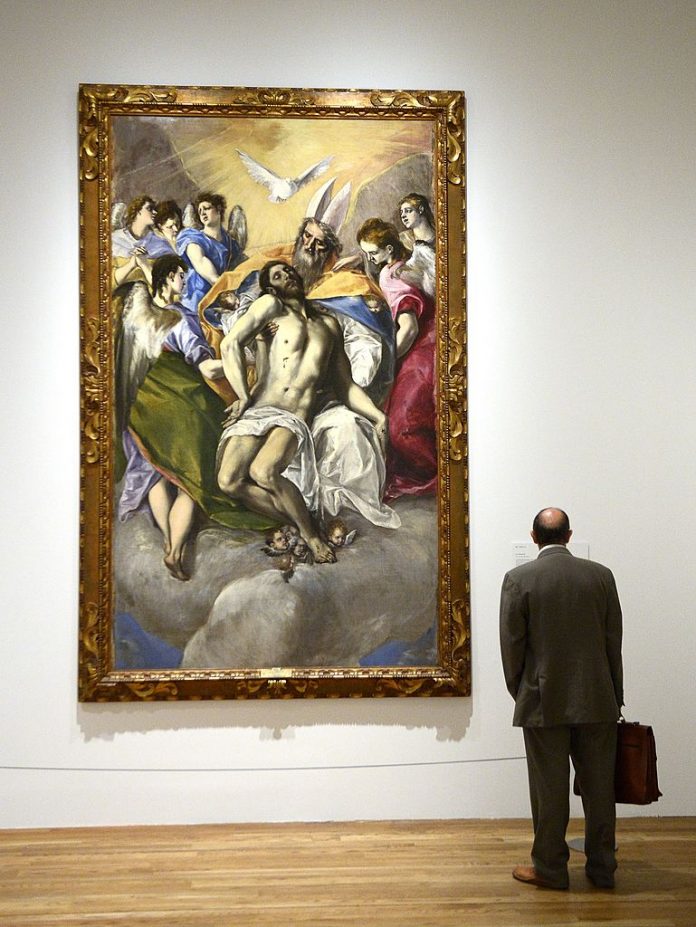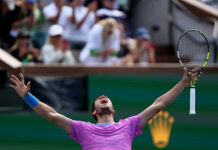Bill Simons
Madrid
Tennis players roam the world. So inevitably they’re asked, “What’s your favorite part of Paris?” or “When you’re not playing, what do you do here in Beijing?” Sometimes they respond with whimsical answers. Monica Seles delighted in sharing tales of her shopping sprees in New York’s Barney’s department store. Goran Ivanisevic joked that Palm Springs was a dull outpost filled with silver-haired elders who get sleepy at eight. At one French Open, Andre Agassi spoke of his pilgrimages to McDonald’s. At another, Jennifer Capriati confided that when she saw Notre Dame Cathedral she wondered where the football team was, and when she passed Napoleon’s tomb, she thought, “Oh, that’s where that little old dead dude is buried.”
But, more often than not, hotel-bound players admit they have little time to see the sights. I know the feeling. Often I leave London or Melbourne without having seen anything except unforced errors and down-the-line winners.
So while in Madrid to cover the upcoming Davis Cup, I wanted to take advantage of a single open afternoon to absorb something of this magical capital. There was no time to munch on a leisurely brunch at the Ristourante Bohemia. I’d have to pass on the town’s sprawling palaces and bustling squares. The inviting gardens, appealing markets and world class people-watching would have to wait. After all, you go to Agra for the Taj Mahal. In Paris, it’s all but illegal to leave town without checking out the Louvre. And Madrid tourism begins with two words – The Prado.
Art-loving pilgrims and wide-eyed travelers alike have been drawn to one of the world’s greatest museums for 200 years. This chilly Saturday afternoon was no exception. Here in the main corridor, a local art student flawlessly sketched a copy of his favorite Velasquez, while in a back room a Basque biker with Rafa-like biceps stole a kiss from his giddy girlfriend. The Prado’s throng is nothing if not unique. A 4’ 6” Belgian nun, an English maid in a black Rolling Stones t-shirt, a Singapore businessman sporting a New York Mets cap, a twenty-something Dutch nerd and a giggly Ohio teen all mingled with an inspiring civility.
Here was tradition on steroids. Christ ascended, kings in grand robes and meager tights struck mighty poses, loyal nobles looked on in support, and humble subjects added their adoration. Around the Prado, in Spanish, French or Chinese, guides offered deep-dive insights as appreciative tourists absorbed all they could about tone and texture, luminosity and shadow, asymmetrical postures and violent brushstrokes.
Every tennis expert knows a thing or two about Federer’s backhand. And what art geek doesn’t like to let you know about hidden meanings, paintings within paintings, or that coolest of all techniques, chiaroscuro?
Amidst the Prado’s vast collection, the title of a single painting drew me – a masterpiece by Goya called “The Great He-Goat.” After all, I love word play and I’m in Spain, the home of the great Rafa, that alpha male who soon may become the GOAT. But I was disappointed. While Nadal inspires us with breathtaking athleticism, Goya’s “He-Goat” portrays a dark cluster of grim witches staring at the devil in the form of a goat with a cape. So I moved on. After all, the Prado offers so many pleasures, depicting every emotion imaginable.
For starters, there’s a wide range of worldly delights and burdens. Heroines and hermits are on one wall. Merry drinkers, half-naked Hindu dancers and knowing oracles are on another. We see dreaded premonitions of war and gasp at the sight of brave insurgents destined to be brought to their knees.
But more than anything, this Madrid mecca celebrates the heart. We relish images of meditation and metaphors, serenity and salvation, devotion and ascendance.
After hours of wandering, I encounter a Roman woman weeping in front of El Greco’s “Coronation of the Virgin.” Our eyes meet. My Italian is rusty and she speaks no English. But so what? This place sweeps us beyond words. True art needs few explanations. The glories of the Prado give images that inspire, messages of faith, and moments of belief that transcend.



















